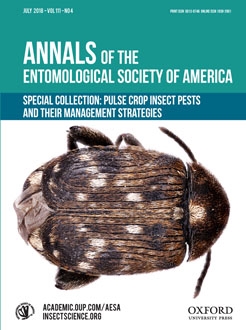Due to their nutritional value and function as soil nitrogen fixers, production of pulses has been increasing markedly in the United States, notably in the dryland areas of the Northern Plains and the Pacific Northwest United States (NP&PNW).There are several insect-transmitted viruses that are prevalent and periodically injurious to pulse crops in the NP&PNW and elsewhere in North America. Others are currently of minor concern, occurring over limited areas or sporadically. Others are serious constraints for pulses elsewhere in the world and are not currently known in North America, but have the potential to be introduced with significant economic consequences. Managing plant viruses and the diseases they cause requires effective diagnostics, knowledge of virus vectors, virus transmission biology and ecology. A comprehensive compendium to inform producers and researchers about viruses currently and potentially affecting pulses in North America is needed. Here we provide an overview of insect transmitted viruses and their biology, followed by descriptions of the structure, infection biology, host ranges, symptoms, interspecific interactions, and current management options including host plant resistance and vector control for 33 viruses affecting or potentially affecting pulses in the United States and Canada. These are organized based on their transmission biology into persistently transmitted (families Geminiviridae, Luteoviridae and Nanoviridae), semi-persistantly transmitted (Secoviridae), and nonpersistantly transmitted (Betaflexiviridae, Bromoviridae and Potyviridae) viruses. We conclude with an overview of the principles of managing insect-transmitted viruses and an outline of areas requiring further research to improve management of viruses in pulses currently and into the future.
How to translate text using browser tools
24 July 2018
Vector-Borne Viruses of Pulse Crops, With a Particular Emphasis on North American Cropping System
Arash Rashed,
Xue Feng,
Sean M. Prager,
Lyndon D. Porter,
Janet J. Knodel,
Alexander Karasev,
Sanford D. Eigenbrode
ACCESS THE FULL ARTICLE
It is not available for individual sale.
This article is only available to subscribers.
It is not available for individual sale.
It is not available for individual sale.
aphid
beetle
integrated pest management
leafhopper
legumes
virus transmission
whitefly





